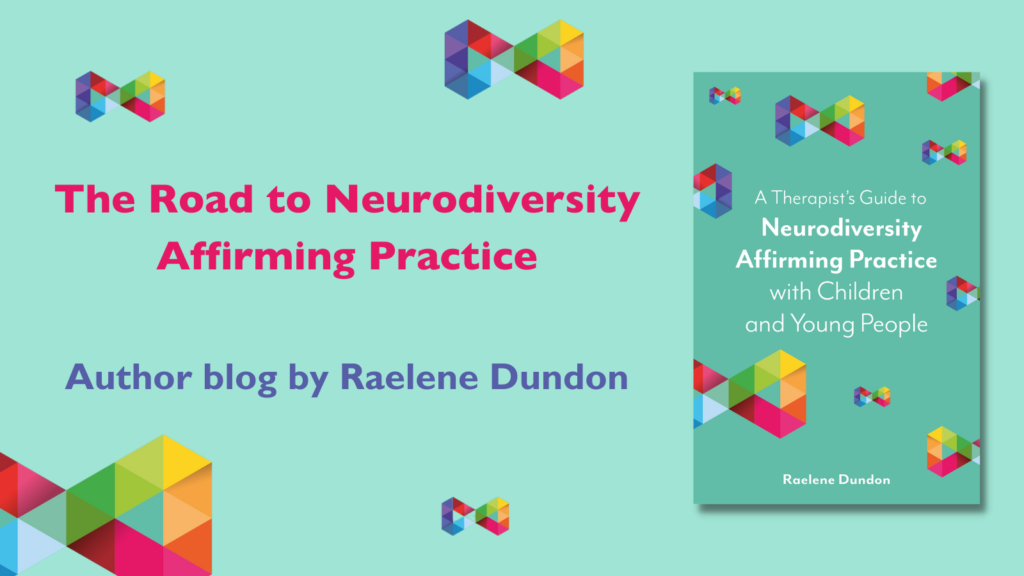The Road to Neurodiversity Affirming Practice
In this blog by Raelene Dundon, she draws on her experience as a clinician to help you find out what you can do to make your practice more neurodiversity affirming.

The road to neurodiversity affirming practice starts with what can be a really difficult realization for a therapist; the realization that what we know about Autism and other neurodivergent neurotypes could be wrong. With that realization comes reflection on our knowledge and beliefs and, most confronting, our practice.
When we open ourselves up to the concept of neurodiversity affirming practice, we also have to face an uncomfortable truth about the therapy and treatment we may have provided in the past. For many of us, our practice has been based on misinformation and outdated concepts of neurodivergence and disability which have led us to work towards making our clients appear more neurotypical rather than supporting and celebrating their individual needs.
But what do we do when we find out that an approach we have been using for years, that is supposed to be evidence-based and widely used, is not neurodiversity affirming, and may in fact be distressing or damaging to our clients?
We have two choices:
We can ignore the information we are hearing about neurodiversity affirming practice from practitioners and lived experience individuals and continue to practice in the way we always have because that is what we were taught and that is what we know, regardless of the impact it could have on our clients.
Or
We can embrace this new information and understand that we have done our best with the knowledge we had, and now we can make changes and do better from this point forward.
This choice shouldn’t be a hard one to make in theory, but it requires us to acknowledge that we may have made mistakes and may have inadvertently caused distress to our clients, and as clinicians this is not an easy thing to do.
In my experience, the decision to become a clinician, whether in medical practice, mental health, or allied health, usually comes from a long-held desire of the individual to help others. So, when we are faced with the possibility that we may have done something that had a negative impact on clients, even though we had the best of intentions, we can easily become distressed or even defensive.
But the reality is that clinicians work with the knowledge they have received, often over years of study and continuing education, and we trust that the information we have is accurate. We certainly don’t think that it would be harmful especially if it is widely used and accepted.
With so many advancements in our understanding of medicine, mental health and neuroscience in recent years, ideas and approaches are constantly changing. Understandably then, there are going to be methods of practice that were seen as effective and safe at one point in time, that are later found to be inappropriate or ineffective.
We all start our journey to neurodiversity affirming practice somewhere, and even the most respected neurodiversity affirming clinicians were new to the paradigm at some point in their careers.
I believe that the most effective clinicians are those that can critically reflect on their own practice, recognize where changes can be made due to new evidence-based insights, and continually look for opportunities to incorporate these new insights into their therapeutic approach to do better for their clients.
The information contained in my new book is the consolidation of my learning and experience over the past decade, and has been informed by many incredible clinicians, advocates, researchers and lived experience experts who have shared their experience and knowledge to further the neurodiversity affirming movement.
While my current understanding of neurodiversity affirming practice is reflected in my writing, it is likely that there will be further shifts in the neurodiversity affirming paradigm in the years to come.
My hope is that “A Therapists’ Guide to Neurodiversity Affirming Practice with Children and Young People” will provide readers with a starting point for their journey into neurodiversity affirming practice, and a firm base for them to continue to build their understanding of neurodiversity affirming practice as it continues to evolve in the future.
Raelene’s new book, A Therapist’s Guide to Neurodiversity Affirming Practice with Children and Young People is available to own now.